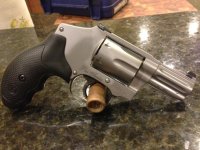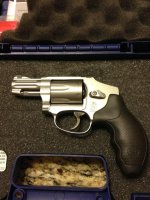WHelena01
Member
For Christmas I bought my wife a 632 Pro Series .327 magnum and after shooting it a bit, she would like the amount of pull for the trigger to be less. The action is smooth, just too much pull. It's a hammerless DA, what is the best way to reduce the pull? Is this something I can do myself or should I take to a gunsmith?
Thank you, Jerry
Thank you, Jerry


